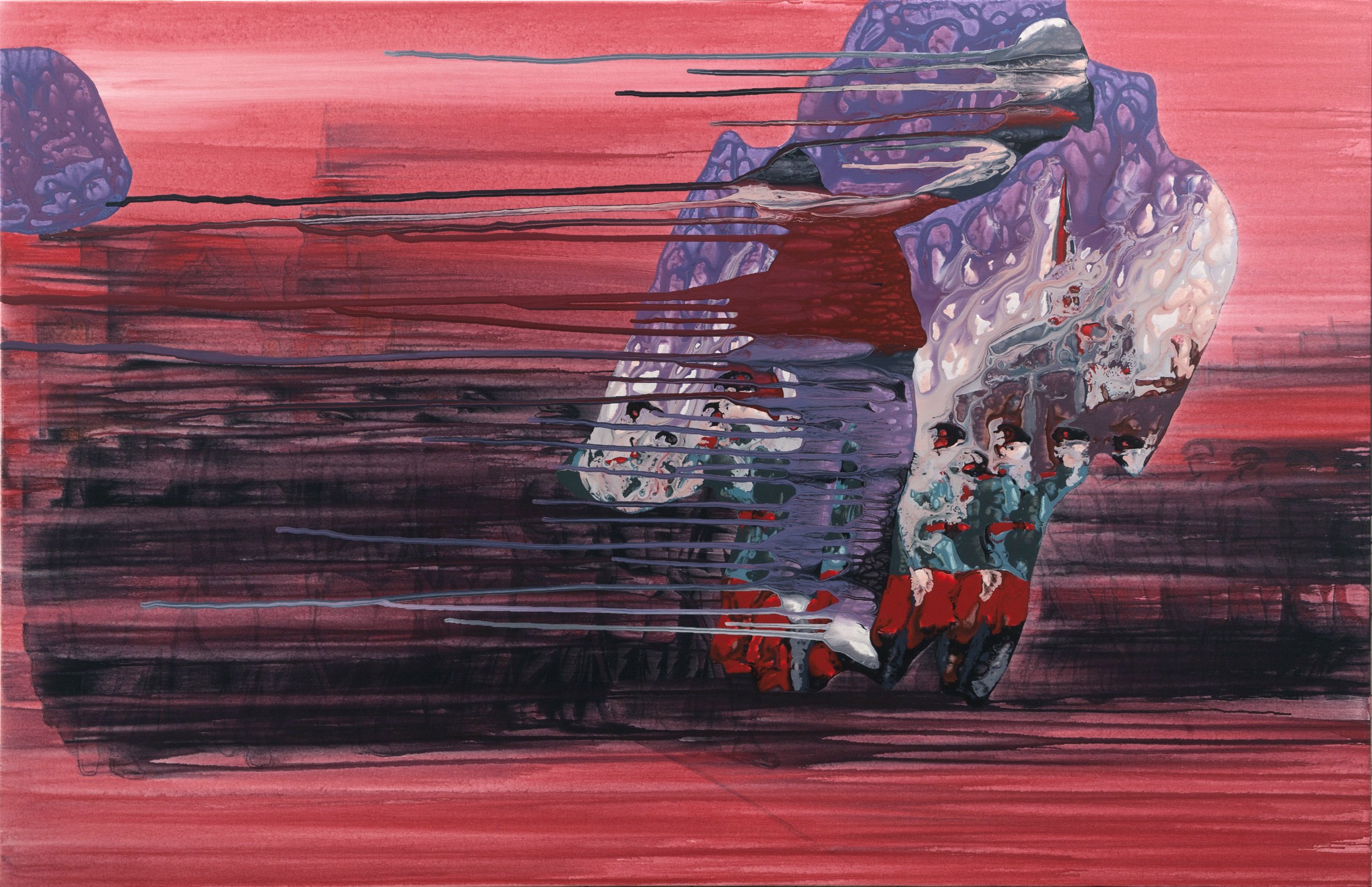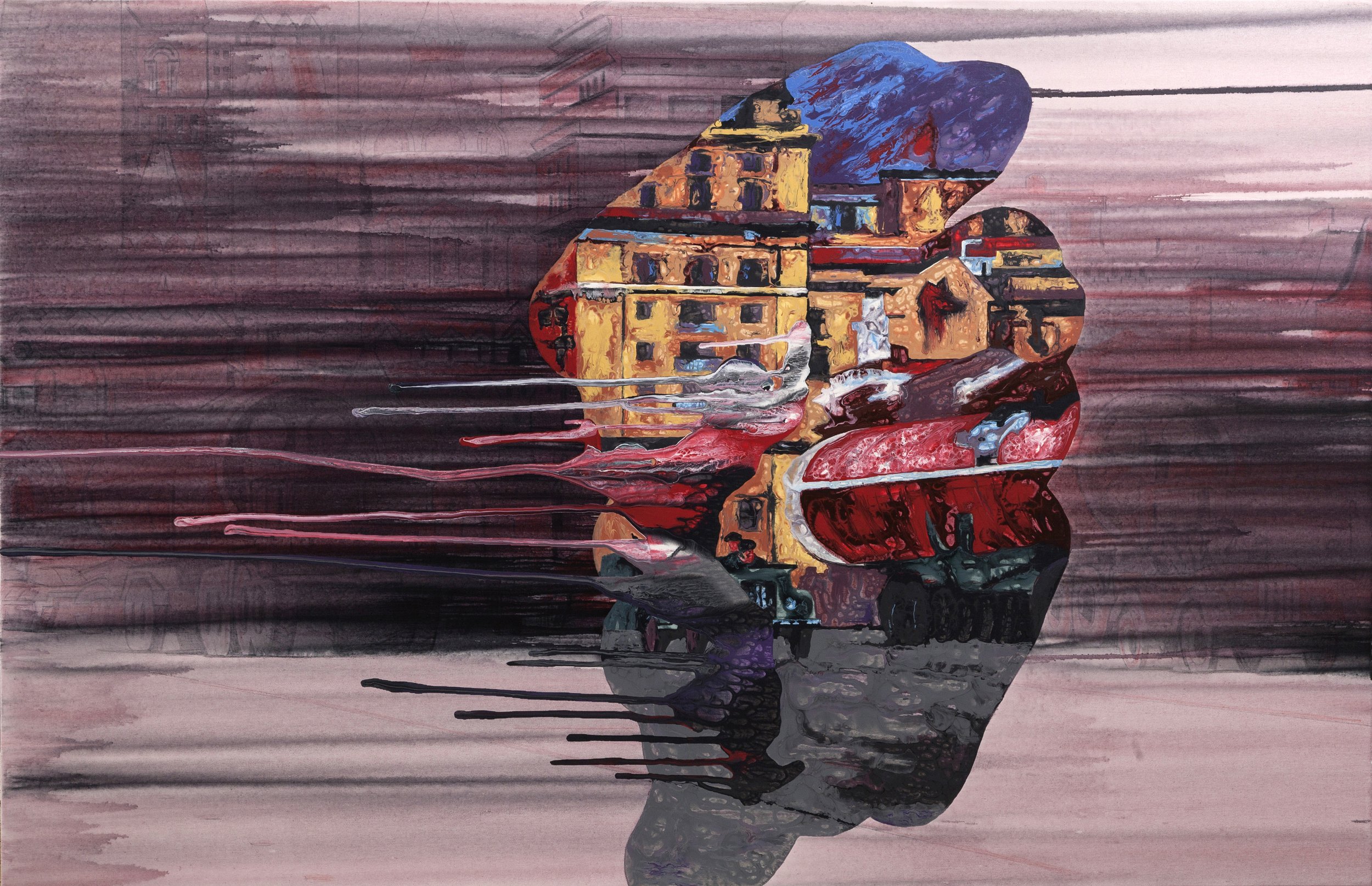IVAN PLUSCH
presented in conjunction with deborah Colton Gallery
IVAN PLUSCH – POST-SOVIET NARRATIVES IN PAINT AND SPACE
Ivan Plusch (b. 1981) emerged from the vibrant St. Petersburg art scene as part of the Nepokorennie “Unconquered” collective, and has since become a vital voice in post-Soviet contemporary art. A painter and sculptor, Plusch is of the generation that “were still children at the time of the fall of the USSR,” and his work poignantly registers the sociological and emotional upheavals of that eral. Plusch’s paintings often appear to melt or ooze, with figures and environments dissolving into flowing pigment – a visual metaphor for the “boundary state between existence and non-existence” that he seeks to capture. “The main question I explore is the existential being of the modern human on the border between the current reality and the reality of new media and technology,” Plusch explains, describing a world where humanity gradually “disappears” into artificial environments To embody time’s passage, he literally lets paint run and sag on the canvas, collaborating with gravity in what he calls a “dance” between artist and materiall. This unique technique invites viewers to contemplate change and impermanence.
In A Glimpse Into the Future, Plusch’s canvases – such as his “Effect” series of 2018 – resonated with themes of memory and transformation, complementing Tobreluts’s digital works in the same gallery space, The inclusion of Plusch, “a young artist from the rising Russian scene”, underscored Matney’s commitment to international dialogue. Now based in Budapest, Ivan Plusch continues to exhibit globally: he has recently shown new series like Solaris (2024) and Shadows from Tears(2023) in solo exhibitions in Moscow and Berlin. In 2024, Matney Gallery itself hosted Current Midtown and Tradition, special exhibitions of Plusch and Tobreluts in a collaborative venue, signaling ongoing support for his work. Plusch’s paintings and installations, which play with Soviet-era iconography and futuristic imagery, question the relationship between man and his environment in a rapidly changing world.. His practice not only enriches Matney Gallery’s curatorial narrative of linking regional and global perspectives, but also provides an exemplar of the gallery’s scholarly, forward-looking bent – investigating history, politics, and technology through avant-garde art.
Ivan Plusch’s work has been widely exhibited in solo and group exhibitions across Europe, Russia, and the United States. Notable solo exhibitions include Theatre of Plusch at the Moscow Museum of Modern Art (2021–2022), The Sticky Fingers' Effect and After Singularity at pop/off/art Gallery in Moscow, and The Promise of Eternal Life at Deborah Colton Gallery in Houston. His work has also appeared in major group exhibitions such as Glasstress Gotika at the 56th Venice Biennale, Process of Passing (parallel to Manifesta 10), and The Right to the Future at the Museum of 20th and 21st Century St. Petersburg Art. Plusch is regularly exhibited at Deborah Colton Gallery, which has featured his work in Awakening: Contemporary Works from Eastern Europe, Between: Daniel Kayne – Ivan Plusch, and in their curated selections for the Houston Fine Art Fair. His work is held in major public collections including the State Hermitage Museum, the State Russian Museum, the Moscow Museum of Modern Art (MMOMA), the National Center for Contemporary Arts (NCCA), and the Montenegro European Art Center, as well as numerous private collections worldwide.
In 2011 Plusch created a series of paintings titled Episode 1 through Episode 5. These feature partially fragmented human figures against abstract, often textual or patterned backgrounds. For example, Episode 5 (2011) shows a man with outstretched arms whose face and body melt into a cascade of drips and binary numbers (Fig. 1). The figure’s head is tilted forward and partly obscured, while columns of Cyrillic characters (e.g. “山B股 永久B股” etc.) and falling numerical codes (e.g. “1056,” “MATH”) fill the surrounding gray space. These elements suggest a collision of the personal and the informational. The panel is painted in acrylic (and varnish) on canvas (149×149 cm), with a pared-down palette of whites, greys, blacks and muted flesh-tones. Plusch’s technique—long vertical drips and smears of paint—literally blurs and dissolves the figure into the background. This “sideways dripping” of pigment is, as one critic notes, something of Plusch’s trademark, recalling the gestural abstractions of Jackson Pollock but applied to figurative subjects. The painterly tension between the defined body and its liquefying edges evokes an uncanny, almost spectral presence





